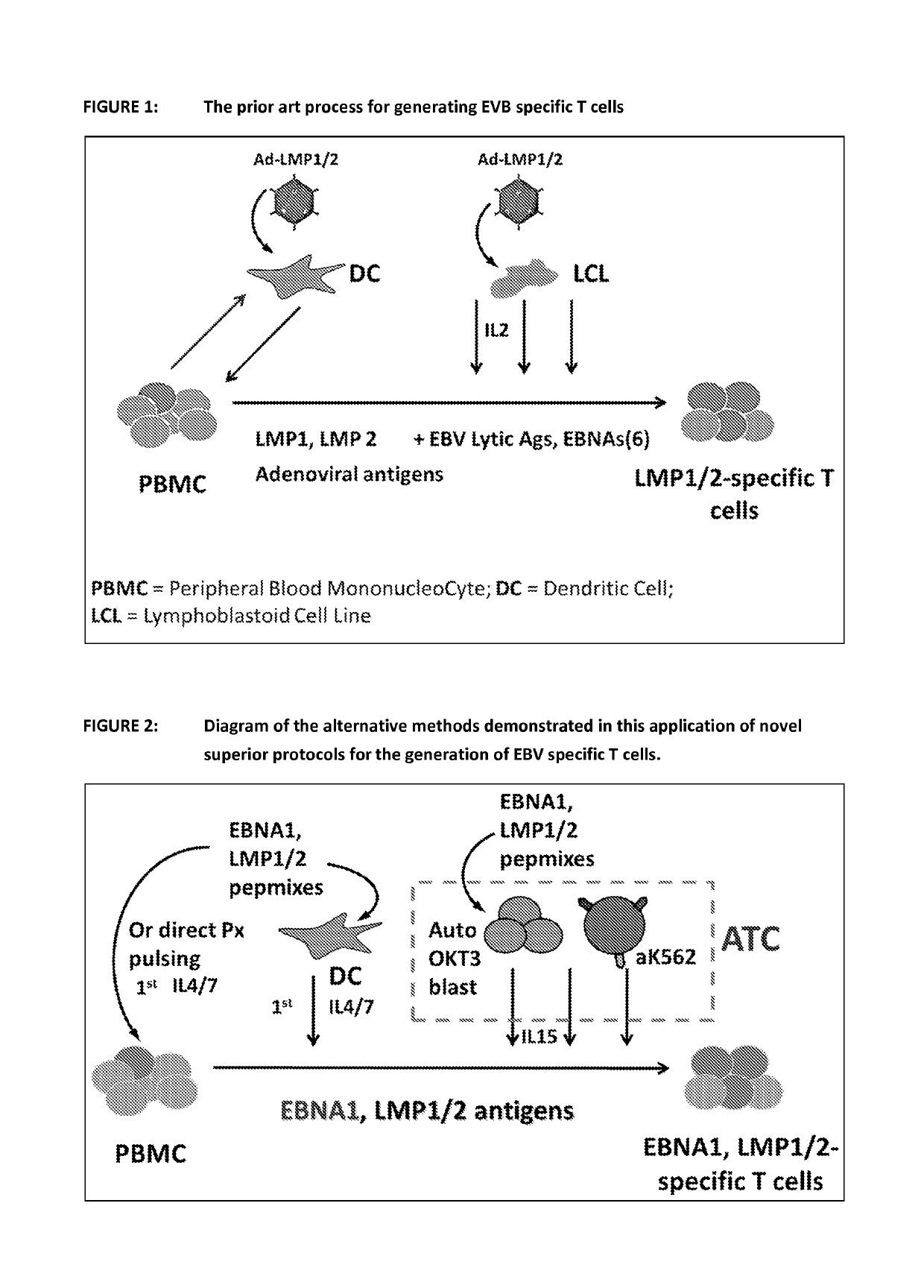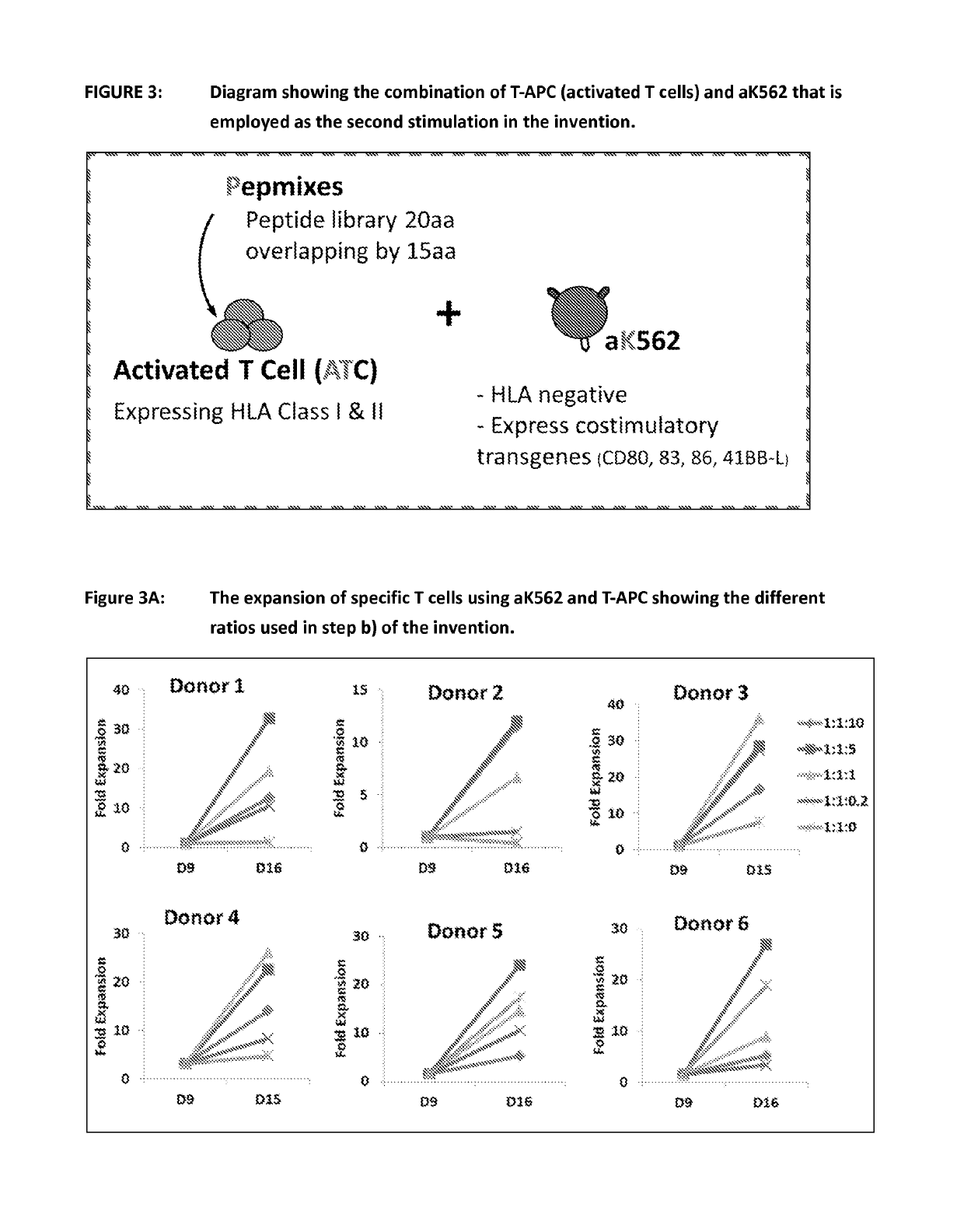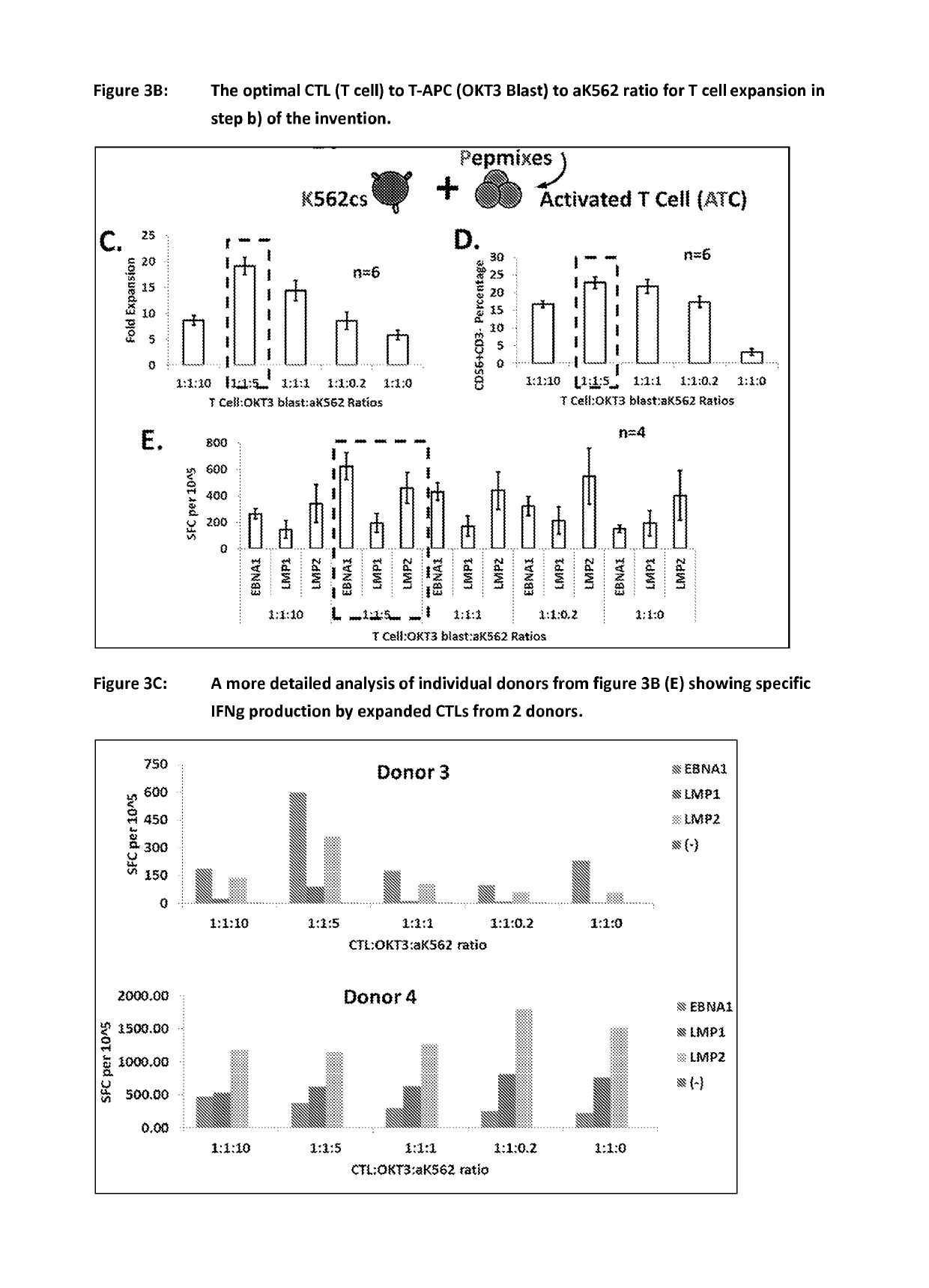Process of expanding T cells
a technology of t cells and expansion tubes, which is applied in the field of expansion tubes, can solve the problems of long, complex and resource-intensive process of vitro activation and expansion of t cells, impractical and economically challenging, etc., and achieve the effect of minimising the amount of time, intervention and resource, and minimising the opportunity for contamination
- Summary
- Abstract
- Description
- Claims
- Application Information
AI Technical Summary
Benefits of technology
Problems solved by technology
Method used
Image
Examples
example 1
Generation of EBNA1, LMP1 & LMP2 Specific T Cells for Healthy Donors and Patients with Nasopharyngeal Carcinoma and Lymphoma
Sub Experiment: Generation of EBNA1, LMP1 & LMP2 Specific T Cells for Lymphoma Patient 1
[0429]D1 Coating OKT3 / CD28 plate[0430]Prepared OKT3 and CD28 antibodies by adding 5 ug each of OKT3 and CD28 antibodies to 5 mL of sterile water. Added 0.5 mL of this mixture into each well of a non-tissue culture treated 24 well plate (24-w-p). Incubated at 4° C. overnight. Note: this is culture day (−)8.[0431]D2 Generation of dendritic cells from frozen PBMCs by adherence & generation of OKT3 blasts from non-adherent PBMC population—culture day (−)7[0432]Lymphoma patient 1 peripheral blood mononuclear cells (PBMCs) frozen stock taken out from GMP bank and follow up samples with permission of PI (Cath Bollard): 4 vials of PBMCs, all frozen between February and March 2010, 5 million each vial, total 20 million. PBMCs were thawed out in 2 vials of 40 mL warm CellGenix media a...
PUM
 Login to View More
Login to View More Abstract
Description
Claims
Application Information
 Login to View More
Login to View More - R&D
- Intellectual Property
- Life Sciences
- Materials
- Tech Scout
- Unparalleled Data Quality
- Higher Quality Content
- 60% Fewer Hallucinations
Browse by: Latest US Patents, China's latest patents, Technical Efficacy Thesaurus, Application Domain, Technology Topic, Popular Technical Reports.
© 2025 PatSnap. All rights reserved.Legal|Privacy policy|Modern Slavery Act Transparency Statement|Sitemap|About US| Contact US: help@patsnap.com



